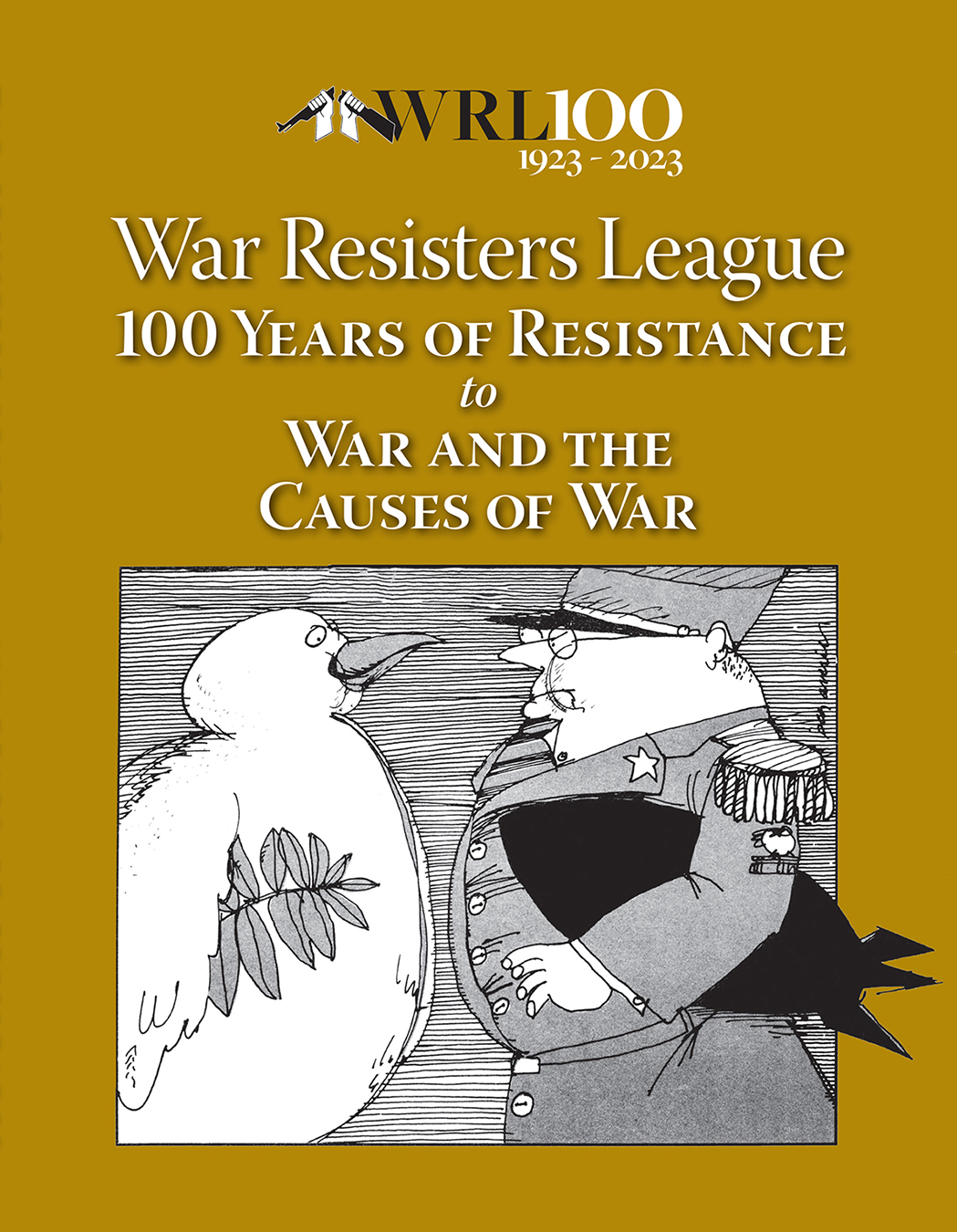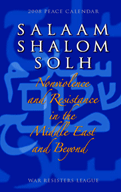Vision in Search of a Strategy
 After Capitalism: Economic Democracy in Action
After Capitalism: Economic Democracy in Action
by Dada Maheshvaranda
Innerworld Publications, 2012, 390 pp., $19.95
After Capitalism: Economic Democracy in Action, a significantly updated version to author Dada Maheshvarananda’s earlier text with a similar name, is a well-researched and written account covering the perils of capitalism and the paths towards a new, just economy. The book shines with its strongly articulated assertions regarding the social, economic, and environmental dangers of global capitalism. Throughout, Maheshvarananda guides the readers with a passionate and unique voice.
Yet, while After Capitalism deftly makes its argument about the absurdities of an economic order based on endless material and social consumption, this is not a book for everyone. In the opening chapters, Maheshvarananda works with two main assumptions: first, that readers are already predisposed to the inherent dangers of capitalism, and second, that readers are prepared to accept an economic critique and solution with a spiritual focus. The book does not take any time easing the reader into either of these non-mainstream points. This is not necessarily a flaw in the text, but readers should be aware that it is obviously targeted toward an audience already aware of capitalism’s failures and who are consciously prepared to accept that a spiritual, non-materialist answer is needed.
As an example, at the start of After Capitalism, Maheshvarananda only spends a few pages covering capitalism’s origins — through the seeds planted by Columbus’s voyages and the early efforts to eradicate indigenous Americans all the way to the rise of this new economic force through the brutal Atlantic slave trade. To any unaccustomed reader, global capitalism’s bloody foundations, which are rooted within multiple forms of genocide, would serve as a true shock worth — at minimum — an entire chapter. In this way, After Capitalism takes on some large issues with broad strokes, which Maheshvarananda regards as givens for the audience. Yet, Maheshvarananda displays After Capitalism’s depth when the book does delve into specific stories illustrating its asserted points, such as how mega-corporations like Walmart exploit the law to their own advantage, or how other multinationals such as Coca-Cola flaunt the law and endanger people while understanding that any punishment it might receive would be negligent.
Ultimately, this all may be a result of the fact that After Capitalism is not a book about what is wrong with capitalism, but rather a heartfelt and spiritual assertion of what must come next.
Maheshvarananda’s spiritual view is one developed by P.R. Sarkar, to whom the book is dedicated. Throughout, the author cites Sarkar almost exclusively, and many chapters are summaries of his thought. Sarkar posits a spiritual life based on Tantric principles, shaped into a method of politicized self-actualization he terms Progressive Utilization Theory, or, Prout. A combination bound to make a secularist cringe and a Leninist cry, Prout seems to be a hybrid of mysticism and Marx that borrows from a smattering of fields of psychology. The result is a shaky holism that guides its adherents through several stages, some occurring simultaneously, others in order. The first is to restore balance in life in order to be attuned to social and environmental needs and be able to respond accordingly. Meditation figures prominently, as does diet, and these adjustments are steps followed by systematized into a plan for healing what the author terms our “collective life.” The basic tenets of this plan will be familiar, and even agreeable, to contemporary leftists: guaranteed sustenance for all, a reorientation of our agricultural systems, empowerment of marginalized (particularly indigenous) voices, and so on. While Maheshvarananda reevaluates these shared concerns in terms of a belief system, they are not developed; each issue is given about a paragraph, then left, presumably, up to the practitioner.
If little of Sarkar’s spiritual view is objectionable, however, it is because it is delivered in sweeping generalizations and in reductionist terms. This may be tolerable in a context of faith, but when Maheshvarananda paints a picture of the cycles of social movements, and indeed of history writ large, the loss of both complexity and specificity is too difficult to swallow. Prout’s approach to describing history is derived in equal parts from Hegel and the Indian caste system. Epochs are described in terms of the dominant class, whose qualities dictate both the zeitgeist and the period’s relation to time. For example, the warrior class typified the Stone Age until the intellectual class brought the civilizing force of religion, which in turn became tyrannical and had its power usurped by the merchant class, whose financialization of human relations characterizes global capitalism. Within each time period, Prout holds that the same four classes vie for dominance, and the result is the ebb and flow of social movement. Since these shifts are cyclical in Prout’s view, each is contingent upon the other, and each contains the other’s antithesis.
The same logic undergirds other belief systems, whether political or spiritual, and comparisons between Eastern religions and European philosophies are not new. What is striking about Prout is the inattention to events and other phenomena that complicate these basic assumptions, such as the occurrence of intersectionality, of hybrid identities and queerness, that fly in the face of such an elementary, even rudimentary, analysis. Alongside this convenient blind spot runs an essentializing attitude that holds, for example, that indigenous cultures are more attuned to ecology, or that there is a class of workers (the same as the class that fomented a revolution in 1917 Russia) that will be the salvation of humankind. Decades of movement-oriented thought have dissuaded us of these ideas, and we would do ourselves a serious disservice to unthinkingly adopt them again.
Near the end of the book, Maheshvarananda talks about how whenever he gives public talks on Prout, he asks: “The slogan, another world is possible invites the question, what kind of world do you want?” While this is an important and potentially empowering question, a question that is just as important also must be asked: “Now we have an idea of what we want this world to look like, so how are we going to get there?”
Maheshvarananda lays out a whole host of destinations in After Capitalism, yet the roadmap for how to arrive remains unclear. An economy composed of socially and environmentally conscious cooperative businesses is certainly attractive, and yes, they will be much, much better than the current corporate landscape, but how will we make this transition? Will the richest and most powerful people in the world simply accept a cap on their wealth and a limit to their riches as Maheshvarananda recommends? A brief scan of history over the last three centuries certainly says otherwise. Likewise, real economic equality will be extremely difficult without economic justice — that is, some form of economic reparations. Overcoming a history of slavery, colonialism, and environmental imperialism will require a restructuring of society and power. As such, too much land and wealth is consolidated in too few hands for any kind of transition towards economic equality to happen without conflict.
Furthermore, many of the sought-after outcomes remain unscrutinized, and as a reader one is left wondering where the critique is, or what happens if any of these proposed solutions go awry. For example, hasn’t the impotence of the United Nations regarding issues of human rights raised doubts about the creation of a new world government, let alone the most powerful countries’ insistence on maintaining their power within this governing body? What about the reality of domestic violence and abuse, when Maheshvarananda envisions an agricultural sector composed of family-run cooperative farms? Agricultural co-ops and worker co-ops are quite different, and unlike worker co-ops, being a worker in an agricultural co-op does not guarantee workers’ rights, equal pay, or a seat at the decision-making table. Factor in the often hierarchical structures of families and there are even more roadblocks for economic democracy.
On the other hand, one could say that these critiques are unfair, and if the road to justice and equality were so straightforward, wouldn’t we already be well on our way there? There is definitely value in envisioning outcomes — in fact, successful movement building requires vision and concrete goals. To that end, After Capitalism provides a comprehensive vision of what Maheshvarananda and other Proutists believe are the best outcomes after capitalism. That said, successful movement building also requires a plan for how to achieve the movement’s goals, and an analysis of the risks if something goes wrong (not to mention a contingent plan should those risks come to pass). After Capitalism is presented as a movement tool, yet there is little analysis of detours the movement could take, and the reader is left wondering how Prout would adapt to these changes. If Maheshvarananda’s vision of a world after capitalism makes sense to the reader, the question still remains, how will we get there?
Andrew Stachiw, David Morgan, and Brian Van Slyke are activists in the co-op movement. Andrew is a high school history teacher, and has created and designed workshops and conferences for a variety of issues, ranging from educational resources to social justice and social change movements. David has long been involved with movements—from public space activism to anti-poverty work—that make use of everyday democracy. Brian has been involved in the cooperative movement since 2006 in two worker co-ops and co-op alliances; he has created educational resources on subjects ranging from co-ops to people’s history and beyond.
Response from Dada Maheshvaranda
I am grateful for this careful and thoughtful review.
“Another world is possible” begs the question, “What kind of world do we want?” I believe this is the most crucial question that we should continually ask ourselves and students from kindergarten to university, because if we know what we want and we work together, nothing is impossible.
I challenge the reviewers’ simplistic appraisal: “Prout seems to be a hybrid of mysticism and Marx that borrows from a smattering of fields of psychology....” Prout is a very clear socio-economic model based on the economic self-reliance of each region, environmental balance and universal spiritual values. Noam Chomsky wrote, “Prout’s cooperative model, based on sharing the planet’s resources for the welfare of everyone, deserves our serious consideration.”
Prout is not set in stone — rather it is a comprehensive set of dynamic principles to be applied to the varying conditions found in different places around the world.
Prout’s model is expansive and addresses most aspects of human life. For that reason the different sections covering small scale private enterprises, cooperatives, public utilities, local economies, food sovereignty, ceilings on wealth, economic democracy, grassroots economic planning, etc. have intentionally been kept brief.
The reviewers wrote, “A secularist [may] cringe and a Leninist [may] cry” at my presentation of universal spirituality. To clarify, I consider spirituality, love, compassion and a connection with all beings to be crucial to a healthy society and economy. We are one human family and the planet’s resources belong to everyone. Hence we must guarantee the basic necessities to all, and over-accumulation must be recognized as immoral.
I agree that Sarkar’s class analysis and cyclical view of the rise and fall of societies does not include all complexity and specificity. However Norwegian peace activist Johan Galtung considers Sarkar “a great macrohistorian, focusing on his theory of Social Cycles and their implications for world unity and peace.” This broad view can help us understand some major forces that have, for example, historically exploited women. It can teach us how we can overcome role limitations as we struggle against injustice.
No roadmap exists for how to achieve this model. If social change could be won by merely following a set of universal instructions, we would have ended war and poverty in every country a long time ago! Yet amazing things happen when the consciousness of a people is aroused. Together we can build this.
For more information, see: www.proutglobe.org





